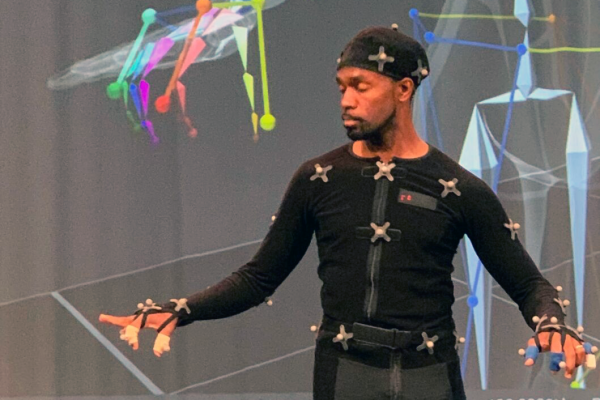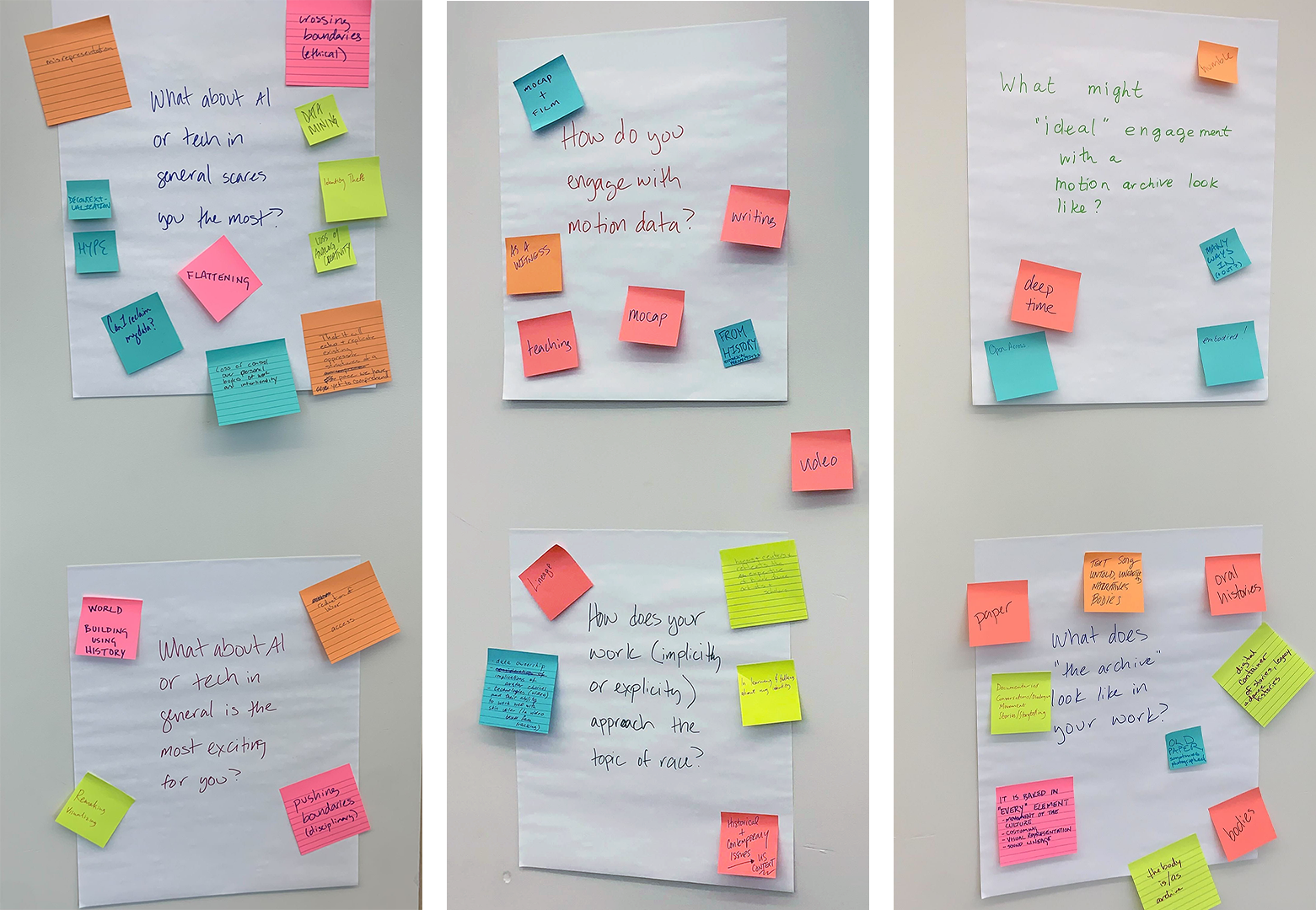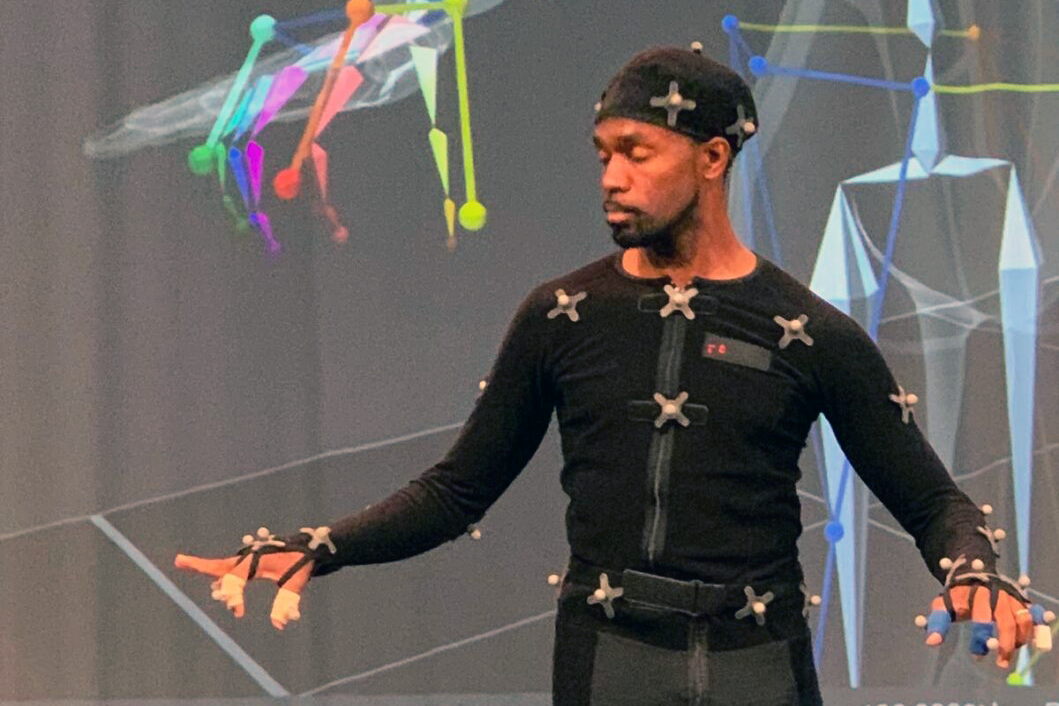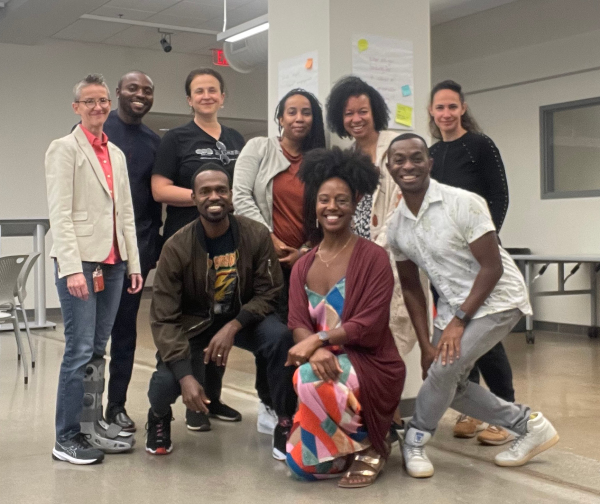Race, Motion Data, and AI: Gathering at The Ohio State University

On August 31 and September 1, 2023, Harmony Bench, Crystal Michelle Perkins, and Vita Berezina-Blackburn hosted visiting scholars and artists working in the field of dance to consider the implications of motion data—especially but not exclusively motion capture—and machine learning/artificial intelligence. The gathering took place as part of their Artificial Intelligence for Creative Movement Analysis and Synthesis research project funded by The Ohio State University’s Artificial Intelligence in the Arts, Humanities, and Engineering: Interdisciplinary Collaborations, and in partnership with Visceral Histories, Visual Arguments: Dance-Based Approaches to Data (Harmony Bench and Kate Elswit), Archiving Black Performance: Memory, Embodiment, and Stages of Being (Crystal Michelle Perkins and Valarie Williams), and the Advanced Computing Center for the Arts and Design Motion Lab (Vita Berezina-Blackburn).
With this gathering, which we hope is the first of many, we convened folks who are working in related areas of inquiry so as to participate in building up a critical and creative discourse that proceeds specifically from dance and body-based practices. We were delighted that Bernard Brown, Kate Elswit, Ishmael Konney, Gesel Mason, and André M. Zachery were able to join us for these conversations. We further thank OSU Dance PhD students Heather Himes and Amy Schofield for their assistance and participation.
Given the separate projects threading together for this gathering, we began by responding to provocations about our relationships to archiving, to history and memory, to embodiment, to race, to technology and motion data, and to artificial intelligence in our research. With increasing calls for “ethical AI” and “responsible computing,” we considered the values motivating our collective and individual work. With their mutual interest in Black dance archives, Bernard offered that the body as an archive is not just a metaphor, and Gesel noted her current research employs digital archives to supplement embodied ones. Ishmael voiced concern that in Ghana, losing interest in a style of music also means losing associated dances and wondered about augmented environments to reconstruct the context of performance. Reflecting his Afrofuturist work André emphasized that immersive, interactive, and augmented experiences can “unlock” the bodily histories that live beyond the dataset. Harmony noted the prevalence of dance’s circulation through digital spaces, and Heather brought the fear of loss and theft into the conversation while Crystal reflected on secret-keeping and who needs to be invited along to do the work. Kate wondered at allowing critique to inform rather than immobilize research, and Vita reminded us that each research process requires learning the language of collaboration anew. From this base, we moved into our second day together.

On Day 2 of our gathering, we had an opportunity to think on our feet a bit more. André agreed to suit up for motion capture, and the conversation shifted from the hypothetical or abstract to the concrete and particular. What is being captured? Where is it stored? Where does it go? How is it retired/decommissioned/deleted? Whose data is it? Arts-based research is not governed by the same protocols as scientific research, and our baseline understandings are often different, for example, when it comes to crediting participants. Our understanding is also different from the gaming industry. What assumptions precede dancers’ entry into a motion capture context, and how are these assumptions amplified for those with minoritized identities? What information does each person need in order to forge that new language of collaboration Vita mentioned?

Vita gave an overview presentation on the work of the Motion Lab, including questions that have arisen in her own motion capture research with pantomime Marcel Marceau, choreographer Bebe Miller, and many others. Such questions include: What problems are introduced when a performer’s physical likeness is removed? How does one retarget motion to an avatar or character? What are the possibilities for experimental and creative visualization? How does motion capture support motion analysis? And how might we understand a performer’s movement identity in relation to their motion data? Mirkamil Mierkamili, a doctoral researcher on the Creative Movement Analysis and Synthesis project, followed up with a presentation on recent advances in machine learning, and how artificial intelligence can be employed in the context of motion data, including extracting data from video, isolating motion features, and synthesizing motion data from one source to a different target image.

These presentations, experiences, and discussions led to a rich conversation about engaging with motion data and AI ethically by being deeply aware of the political and experiential realities of race in the process. Prompted by Crystal to identify “what are the yeses,” the group proposed such ideas as:
- Having these conversations and intervening before the technologies are sent back to communities
- Centering cultural values as well as use/usefulness to communities
- Informed consent requires understanding, which means inviting more folks to the table by increasing access, training, knowledge, and participation
- Recognizing the contributions of artists and others from whom data is “captured”
- Identifying data caretakers or stewards in agreements who consult on the future of the data
- Building conversations and way-finding into grant applications so that rigorous processes are also part of project outcomes
- Moving at the speed of trust
Our first Race, Motion Data, and AI Gathering at OSU was a big success, and we thank everyone who participated!

Front row: André M. Zachery, Heather Himes, Bernard Brown
